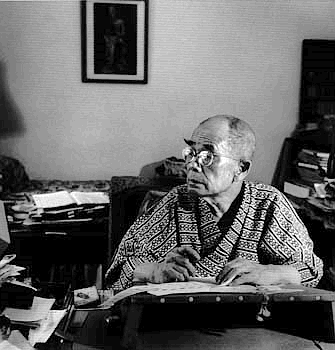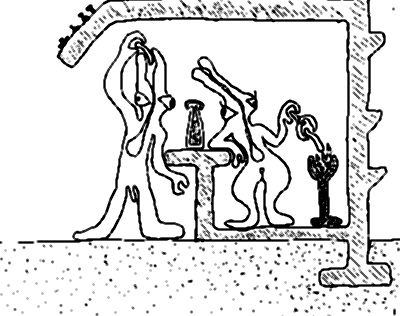Hey, I'll be reading a story on KFJC bright and early Tuesday morning again.
Yesterday I mentioned using a koan in an SF story as a way of jumping between the material and aethereal layers of reality. Shuzan's koan of the shippe (short bamboo staff) seems like a good one to use. I looked for it online and first found this form.
(Form 1) Shuzan held out his short staff and said, “If you call this a short staff, you oppose its reality. If you do not call it a short staff, you ignore the fact. Now what do you wish to call this?” [Text found in an online koan collection.]

Note that in traditional Zen teaching, the penalty for a poor answer was a hard whack on the head with a short bamboo staff like Shuzan held.
The commentary on this koan says, “It cannot be expressed with words and it cannot be expressed without words. Now say quickly what it is.”

All the other online refs quote the same text — a weakness of online info. So I went the dead-tree route. D. T. Suzuki describes some variations on this koan in Essays in Zen Buddhism (1961 Grove Press, NY) which sits on my bookcase.

[The Suzuki picture is from a cool Neobuddhism site.]
(Form 2) The masters generally go about with a kind of short [bamboo] stick known as a shippe, or at least they did so in old China. It does not matter whether it is a shippe or not; anything, in fact will answer our purpose. Shuzan, a noted Zen master of the tenth century, held out his stick and said to a group of his disciples: “Call it not a shippe; if you do, you assert. Nor do you deny its being a shippe; if you do, you negate. Apart from affirmation and negation, speak, speak!” Suzuki, p, 275.

(Form 3) Ummon expressed the same idea with his staff, which he held up, saying: “What is this? If you say it is a staff, you go right to hell; but it is not a staff, what is it?” Suzuki, p. 276.

(Form 4) Ummon once lifted his staff before a congregation and remarked: “In the scriptures we read that the ignorant take this for a real thing, the Hinayanists resolve it into a nonentity, the Pratyekabuddhas regard it as a hallucination, while the Bodhisattvas admit its apparent reality, which is, however, essentially empty. But, monks, you simply call it a staff when you see one. Walk or sit as you will, but do not stand irresolute.” Suzuki, p. 34.









